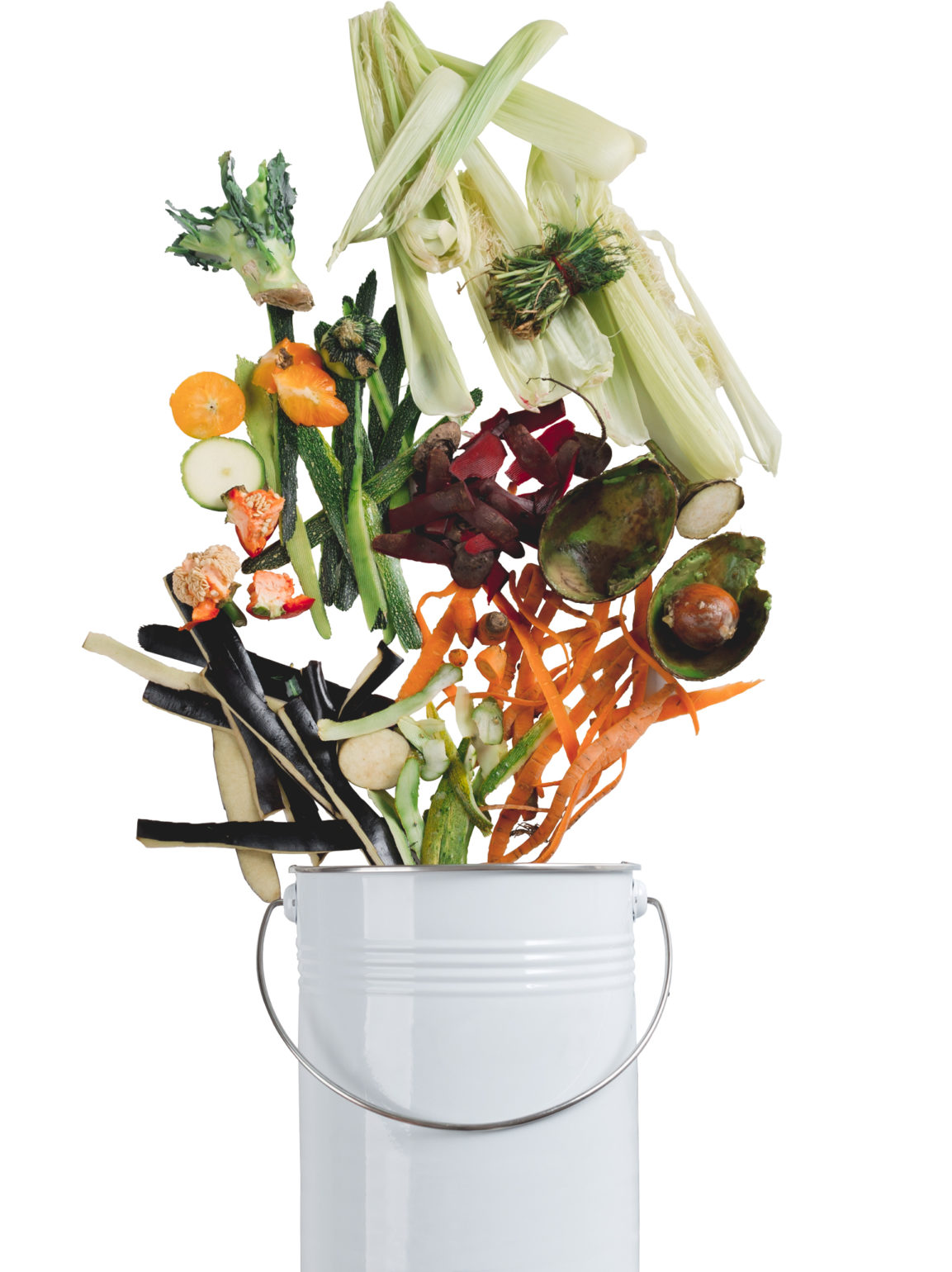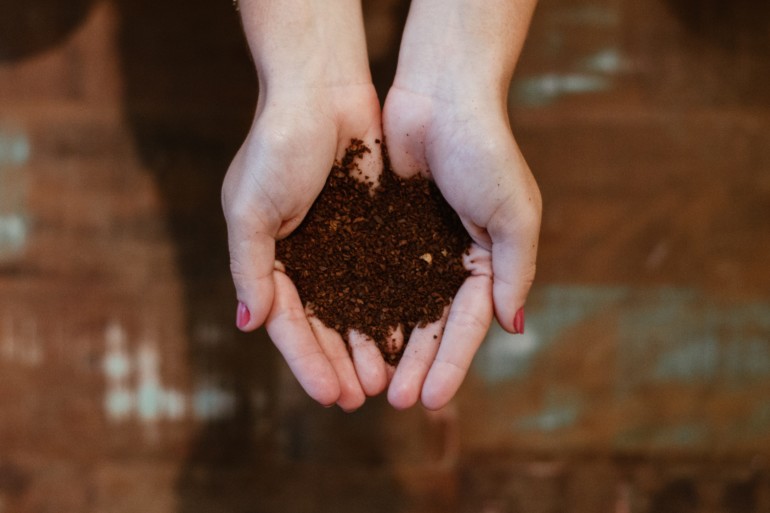The truly scary changes in Earth’s climate are a call for us all to take action, which often means giving something up. But one highly effective climate action is free, easy and takes almost no time. It’s curbside composting, and now it’s the law.
As of January 1, 2022, California requires curbside composting, which means that instead of organic materials — such as food scraps, yard trimmings, and soiled paper and cardboard — going in a regular trash can, they must go in a green container. In addition to single-family households, property managers of multifamily residences are required to make sure there’s a green bin and businesses need to subscribe to a green cart service, which is half the fee for a landfill cart. (Details differ slightly from one hauler to another, so check in with yours if you have questions.)
This one simple action will help the state achieve its goal of composting 75% of organics by 2025, which will reduce climate-changing greenhouse gas emissions as much as taking 1 million cars off the road each year. The point is to reduce the production of methane, a gas that has more than 80 times the heat-trapping power of carbon dioxide during the first 20 years after it reaches the atmosphere. Landfills are the state’s third-largest source of methane, because when organics decay in the low-oxygen environment of a landfill they emit about a 50-50 mix of carbon dioxide and methane. With composting, which brings oxygen into the mix, organics decompose and produce mainly carbon dioxide, with almost no methane. Plus, composting enriches the soil and can help draw carbon dioxide out of the atmosphere. This one simple action will help the state achieve its goal of composting 75% of organics by 2025.

For all of these reasons, it’s well worth the few minutes a week it takes to corral food scraps and soiled paper in a small bin (lined with a paper or compost bag, not plastic) and to empty that into the green cart every few days. One easy rule to remember is that anything that was alive can be composted, which means, among other things, no plastics (not even “compostable” ones), diapers or pet waste. The Zero Waste Marin website provides comprehensive information about what is compostable, and for visual learners, Marin Sanitary Service provides a handy chart of what goes in the green cart in their area.
Get your compost routine started with a free countertop bin with a lid from Zero Waste Marin, or buy a style that matches your décor. A third option is to purchase a countertop machine, which generally costs a few hundred dollars and can create compost in about a day. (Note that some of these machines claim to handle pet waste and litter, which are not currently allowed in curbside green carts.) Bonus: You’ll not only reduce greenhouse gas emissions and comply with the state composting mandate, but you can also use the nutrient-rich soil to nourish your garden and house plants.
For More on Marin:
- 8 Smart Ways to Compost
- Shop Local: Environmentally-Friendly Product Picks That Are Gentle on the Planet
- Amazon Watch’s Leila Salazar-López Shares a Passionate Message About the Rainforest and How You Can Help Save It

Anne-Christine Strugnell is a Marin County-based writer whose work has appeared in MORE Magazine, Self, the Christian Science Monitor and the Cup of Comfort series. In 2019, awareness of the climate crisis drove her to focus on climate awareness work with Resilient Neighborhoods, Environmental Forum of Marin and the Climate Reality Project.


